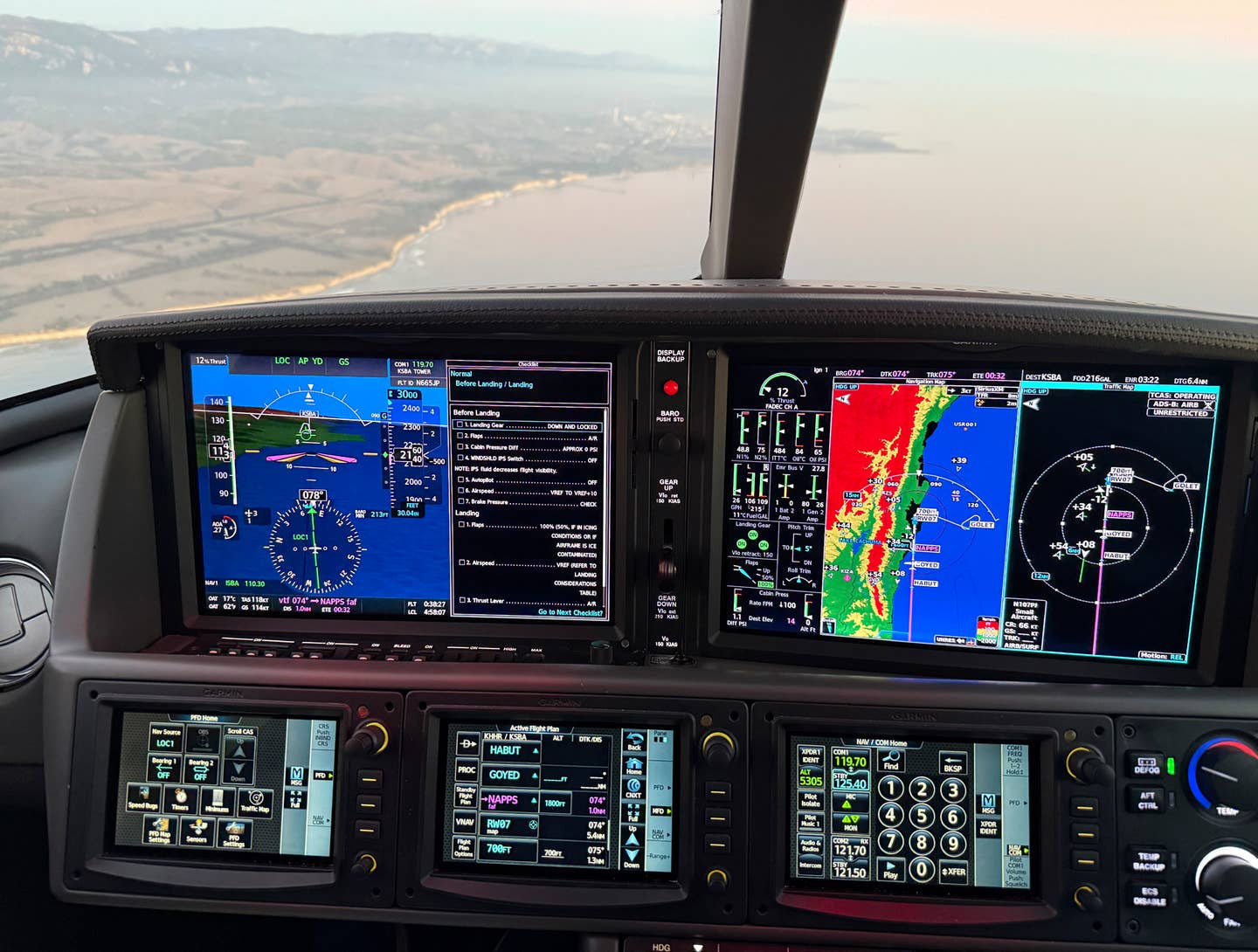
Mark Phelps
I've carried several varieties of portable GPS navigators over the years, and of course none are approved as sole means of navigation for IFR operations. There are a number of reasons for this, including the fact that portable navigators don't incorporate the necessary RAIM (receiver autonomous integrity monitoring) technology for IFR certification. RAIM raises a red flag when the accuracy of a GPS receiver is compromised for whatever reason, and portables don't have it. So even with a magical GPS box on board, if it's a portable, it's mandatory to file a /U flight plan, planning to fly on airways and relying on VORs for navigation fixes and to identify intersections.
But increasingly, controllers are relying on being able to route traffic off airways to meet their needs. Even a 'slash uniform' notation in the flight plan doesn't seem to deter them from this practice, as I've discovered over time. The first flight where I got an amended clearance direct to an intersection, I protested to the controller that I was slash uniform. He asked if I had any sort of GPS on board and I replied that I had a portable "VFR-only" navigator. I even told him the brand and model number. He said that was fine, proceed direct to 'watevr' intersection.
The most extreme example was when I took off from an airport in Ohio with my IFR flight plan in play, including about a dozen waypoints along a complement of victor airways. But as soon as the tower turned me over to the departure controller, he said, "Upon reaching 1,000 feet, proceed direct Solberg," which is the VOR that's 4.1 miles from my home airport in New Jersey — and 412 nautical miles from the departure airport.
In subsequent conversations with controllers, I've been assured that as long as I'm flying in a radar environment, I need not be on an airway or even navigating to a specific VOR, whatever equipment I have on board. In effect, a direct clearance to an intersection — or an airport two and a half hours away — is the equivalent of a vector from the controller. In a non-GPS world, they would guess at a heading that would steer me toward the waypoint involved, then watch me on radar to ensure that the heading was, indeed, working out. Of course, any sort of GPS can keep me within a gnat's butt of the centerline of a direct route to anywhere on the planet, so there is little or no guesswork.
Still, I imagine they should probably say the magic word 'vector' just to keep the whole conversation totally legal. And on occasion I've asked a controller to do that. But in conversations on the ground with a few controllers, I've found that the practice is widespread, and the extra bandwidth required to clarify the status of my GPS receiver is probably considered a wasted transmission anymore.
For those who have an FAA-blessed panel-mount GPS, this whole discussion might seem like a waste of space. But maybe you use a portable GPS as a backup, or to take advantage of its satellite weather and terrain warning capability. The day might come when you are looking to that portable for more complete guidance. It's nice to know that some of its limitations might not be so limiting after all, at least in the en route environment. When it comes to approaches, you're still better off relying on the ILS needles first and using the GPS moving map for overall situational awareness.
Call to action: If you have any tips of your own you'd like to share, or have any questions about flying technique you'd like answered, send me a note at enewsletter@flyingmagazine.com. We'd love to hear from you.

Sign-up for newsletters & special offers!
Get the latest FLYING stories & special offers delivered directly to your inbox






